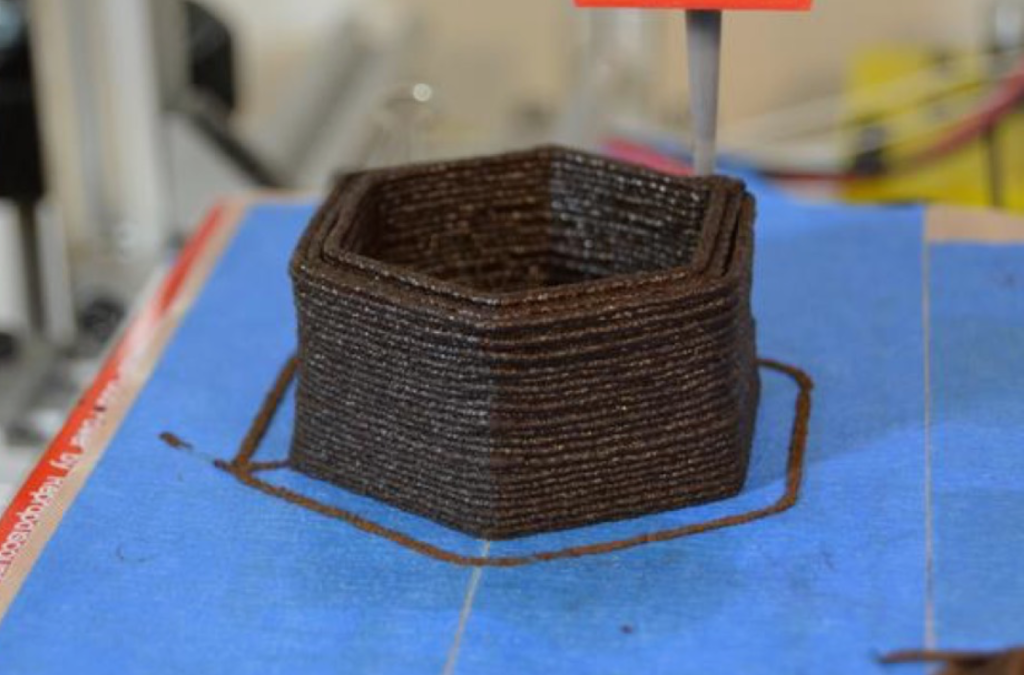The Internet Is About to Get Much Worse
... If we don’t have any protections from the A.I. data overgrazers, I worry that it will feel pointless to even try to create in public. And that would be a real tragedy.
See the full Opinion piece here: https://www.nytimes.com/2023/09/23/opinion/ai-internet-lawsuit.html
[Dreamscape Learn] Rowan University brings power of cinematic storytelling and advanced virtual reality to higher education
In another giant step toward reimagining higher education, Rowan University is collaborating with Dreamscape Learn and Arizona State University to launch a new approach to learning using virtual reality (VR)-enabled experiences that combine “education through exploration” pedagogy and cinematic storytelling techniques to achieve extraordinary outcomes.
Rowan leads the first group of universities in the nation to license the new technology and curriculum developed by Dreamscape Learn, in collaboration with ASU, recognized as the No. 1 innovator in higher education by U.S. News & World Report. ...
Since 2022, more than 12,000 students at ASU have completed introductory biology courses incorporating Dreamscape Learn’s “Immersive Biology in the Alien Zoo” lab curriculum. ...
According to a study conducted by ASU, students who conducted virtual field research in the Alien Zoo labs were nearly twice as likely to earn an “A” lab grade when compared with their peers in traditional “wet labs.” The findings held true across all demographics, except for honors students whose scores remained the same for either course. ...
“This isn’t just about the technology — for every 15 minutes of VR, the students participate in three hours of work outside of VR. We’ve found through our research and development at ASU, that by combining highly cinematic storytelling with innovative curriculum and technology, we can create classroom experiences that motivate students to do the work necessary to master a subject," said Dreamscape Learn CEO Josh Reibel. ...
Once the Dreamscape Learn technology has been launched, Rowan will work to build new, interdisciplinary immersive courses across all of its colleges and schools. Where appropriate, Rowan anticipates licensing their original immersive courseware to other institutions using the Dreamscape Learn platform.
See the full story here: https://today.rowan.edu/news/2023/09/bringing-power-of-storytelling-virtual-reality-to-higher-ed.html
Huawei’s New Gadgets Show How China Aims to Move Forward Without Foreign Tech
...Huawei says NearLink uses less than half the power of Bluetooth, is six times faster, has 1/30th the latency or the time it takes for data to travel from one point to another, and supports 10 times the number of devices in a network. ...
China’s technological rise is intricately tied to its global ambitions, leveraging advancements to expand its geopolitical influence. One example is Beidou, a substitute for the U.S.’s satellite-based Global Positioning System. China has also set a domestic standard for a new way of designing chips, while global chip giants also formed a coalition to create them. ...
See the full story here: https://www.wsj.com/business/telecom/huaweis-new-gadgets-reveal-hidden-teeth-in-china-tech-resistance-d673555f
AI, seniors’ virtual reality innovations honored with Hillman Foundation grants
A nurse-moderated virtual reality program for older adults with kidney disease, and an algorithm project for advanced care planning, have received a funding boost as part of an end-of-life grant initiative. ...
“The quality of care delivered at the end of life is a bellwether for our society,” Hill Foundation Executive Director Ahrin Mishan said in a statement. “We believe that nurse-designed innovations can help to ensure that all people with serious illness have access to the compassionate, equitable and trustworthy care they deserve.” ...
See the full story here: https://www.mcknightsseniorliving.com/home/news/tech-daily-news/ai-seniors-virtual-reality-innovations-honored-with-hillman-foundation-grants/
Don’t throw out those used coffee grounds—use them for 3D printing instead
... Inspiration struck while Rivera was a graduate student at Carnegie Mellon University and a regular at Arriviste Coffee Roasters cafe in Pittsburgh. The used coffee grounds were composted by a local group until the COVID-19 pandemic hit, when the owner was forced to start throwing the grounds out. Rivera remembered the owner's dilemma when he became a postdoc at University of Colorado Boulder and was casting about for sustainable alternatives for 3D printing. Coffee grounds seemed like a viable option. "When you do the extraction for brewing a drink [of coffee] you're only drinking about 20 percent of what's in that bean," said Rivera. "The spent coffee grounds are the other 80 percent of the material that's there."
Arriviste supplied Rivera with spent coffee grounds from making espresso-based drinks like lattes and cappuccinos. The grounds were dried in direct sunlight over two days rather than drying them in an oven to reduce energy consumption for the process. The dried grounds were sifted with a standard kitchen strainer to remove large clumps and then mixed with xanthan gum and carboxymethyl cellulose powders, which serve a similar purpose to binders, stabilizers, and thickeners. Finally, that mixture was combined with water (proportional by mass), and the resulting paste was loaded into 60 mL syringes for use in a modified consumer-grade 3D printer. (Rivera's adapter design is open-sourced.) No heat is required during the printing process.
The finished 3D-printed objects are as strong as unreinforced concrete, per Rivera. His team has made small planters to grow seedlings, which can be transferred to a garden—biodegradable planter and all—when the resulting plants are ready. They've made decorative pendants and espresso cups out of this new material. And they created 3D-printed prototype user interfaces for human-computer interactions that changed shape due to shrinkage as they dried—a single-layer square morphing into a saddle shape, for example, or a rectangular rod that bent upwards as it dried.
See the full story here: https://arstechnica.com/science/2023/09/dont-throw-out-those-used-coffee-grounds-use-them-for-3d-printing-instead/?mc_cid=671b60cb73&mc_eid=cf24d7da5b

A new crop of fintech startups are tackling blockchain-inspired problems without the blockchain
... I spotted three companies in this batch that use traditional finance tools to tackle blockchain-adjacent problems — all focused on markets outside the U.S.
The most promising of the batch is the Bengaluru-based Cheq, which is one of the first startups to build on India’s unified payments interface (UPI). India is currently making a push to expand UPI internationally, which creates a major opportunity for projects like Cheq. The company plans to become the main entry point for UPI users who don’t have an Indian national ID, a potentially enormous market if the platform keeps growing. There’s a lot more bureaucracy involved in building for UPI (in Cheq’s case, they’re getting their API keys from the government), but it also means a reliable client base. ...
“We have to acknowledge that fintech has always been very closely linked to the government,” he says. “Like it or not, our tax systems and legal jurisdictions operate according to these borders. So while the world was told that bitcoin was global, ultimately all the real money was stored within the borders of particular countries, and when those countries turned on bitcoin, the whole thing crashed.” ...
In Africa, a company called Capi Money is dealing with international invoicing — essentially smoothing the path for African businesses transacting with customers overseas. A neobank project called Coba is focused on transfers and currency exchanges between the U.S. and countries in Latin America, aimed at digital nomads who are spending pesos but otherwise keeping their money in dollars. In both cases, they’re going after the same problems as blockchain remittance services, but with more focus and less ideological baggage. ...
“Every cross-border company is trying to give you a seamless, low-cost, trustworthy payment system,” Shekhar told me. “The way bitcoin does it is saying, ‘People are not trustworthy, we will trust abstract technology.’ The way traditional governments do it is by saying, ‘I have these guns and I’m going to shoot the guy who tries to break the system.’ And that is good enough.”
See the full story here: https://restofworld.org/2023/exporter-crypto-y-combinator-blockchain-fintech/?mc_cid=671b60cb73&mc_eid=cf24d7da5b

Sandbox VR starts Squid Game Virtuals location-based VR experience on September 29
... Starting September 29, fans will have the opportunity to immerse themselves in the thrilling world of Squid Game through a full-body VR experience at more than 40 Sandbox VRlocations. ...
The Squid Game Virtuals VR experience at Sandbox VR transports players to iconic locations from the series, where they become contestants in intense challenges inspired by the show. Fortunately for players, Sandbox VR version is a little more forgiving than the Netflix show. For instance, nobody really dies in a bloody mess. It’s not a graphic version of Squid Game. ...
There are eight games altogether at each Sandbox VR locations. Your group of up to six players can play for around 30 minutes, and get perhaps six games done during that time. You compete against each other to get the most points and win the Piggy Bank. The losers are all “eliminated.” If you want to play all eight games, you’ll have to go back more than once. ...
While the show is quite serious, maddening and horrifying, this experience is just fun. Your whole body is the game controller. ...
See the full story here: https://venturebeat.com/gaming-business/sandbox-vr-starts-squid-game-virtuals-location-based-vr-experience-on-september-29/

Will Hurd Releases A.I. Plan, a First in the Republican Presidential Field
...
The plan, first reported by Axios, takes an expansive view of both the potential and the risks of artificial intelligence. He calls for A.I. to be used much more widely than it currently is — both in administrative tasks within the federal government and in highly sensitive areas like national defense — but also supports regulating the industry more tightly than is typical of many Republicans’ approach to private industries.
Among his proposals are calls to ensure compensation when people’s intellectual property is used in A.I.-generated content, as well as name, image and likeness protections against so-called deepfakes. He would also seek to require permits for companies that want to build A.I. models and to impose “strict regulations” on exports of A.I. technology, and would reject any exemptions for developers from liability under existing laws. ...
He once worked as a senior adviser at a cybersecurity firm called FusionX, and made cybersecurity one of his main focuses as a legislator. He also led the House Oversight Subcommittee on Information Technology, where he organized hearings on artificial intelligence in 2018, long before it entered the mainstream. After leaving Congress in 2021, he joined the board of OpenAI, the artificial intelligence laboratory that developed ChatGPT. ...
“We have allies and adversaries, both nation-states and individual hackers, who are pursuing artificial intelligence with all they have because dominance in artificial intelligence is a guaranteed leg up in the realm of geopolitics and economics.” ...
See the full story here: https://www.nytimes.com/2023/09/20/us/politics/will-hurd-ai-plan.html
What label should be applied to content produced by generative AI?
PhilNote: this Stanford / MIT academic study quantified the public perception of 9 ways of labeling AI content. Spoiler alert; "Across all five countries, we find that participants most consistently associated ``AI Generated,'' ``Generated with an AI tool'' and ``AI manipulated'' with content that is generated using AI, regardless of whether that content is misleading - and thus are not consistently associate with misleading content."
Abstract
With the rise of generative AI, there has been a recent push for disclosing if content is produced by AI. However, it is not clear what the right term(s) are to use for such labels. In this paper, we investigate how the public understands the mapping between nine potential labeling terms (selected through consultation with academics, technology companies, and policy organizations) and twenty different types of content that vary in the extent to which they are AI-generated, and the extent to which they are potentially misleading. To do so, we conducted a study with samples from the U.S. (N=1056), Mexico (N=1060), Brazil (N=1065), India, (N=1038), and China (N=1031). Participants were randomly assigned to one of the nine terms, and were then shown descriptions of each of the 20 content types and asked whether the term applied to that type of content. Across all five countries, we find that participants most consistently associated ``AI Generated,'' ``Generated with an AI tool'' and ``AI manipulated'' with content that is generated using AI, regardless of whether that content is misleading - and thus are not consistently associate with misleading content. Conversely, participants most consistently associated ``Deepfake'' and ``Manipulated'' with content that is misleading, regardless of whether the misleading content was generated using AI. These patterns are robust across demographic subsets based on age, gender, education, digital literacy, and familiarity with generated AI. Interestingly, ``Artificial'' does fairly well at both classification tasks in the US, Brazil, India, and Mexico, but does very poorly in China because the term has a different connotation when translated. Finally, we examined participants' subjective assessments of how using a given term as a label would affect their belief in the veracity of the labeled content, and their attitudes towards the content and the poster. We observe a negative correlation between these two outcomes, such that the terms that participants thought would most effectively reduce belief were also the terms that created the most negative feelings towards the content and poster. These results have important implications for how and where generative AI disclosure is implemented, and suggest that platforms and civil society must decide carefully what their objective is for such disclosures.
See the full paper here: https://psyarxiv.com/v4mfz
TikTok debuts new tools and technology to label AI content
...
TikTok announced today it will launch a new tool that will allow creators to label their AI-generated content and will begin testing other ways to label AI-generated content automatically.
The company says it felt the need to introduce AI labeling because AI content can potentially confuse or mislead viewers. Of course, TikTok had already updated its policy to address synthetic media, which requires people to label AI content that contains realistic images, audio or video, like deepfakes, to help viewers contextualize the video and prevent the spread of misleading info. TikTok’s policy allows it to take down realistic AI images that aren’t disclosed.
However, outside of the extreme case of using AI to intentionally mislead users, some AI-generated content can toe the line between seeming real or fake. In this gray area, more transparency is generally appreciated by end users so they know whether or not the content they’re viewing has been heavily edited or created with AI. ...
In addition, TikTok says it’s working to develop a way to automatically detect and label AI content. This week, it will begin testing an “AI-generated” label that will eventually apply to any content that it detects was edited or created with AI. ...
TikTok notes it consulted with its Safety Advisory Councils when developing its new AI labels, as well as industry experts including MIT’s Dr. David G. Rand, whose research has examined how users respond to different types of AI labels. To that end, TikTok landed on the term “AI-generated” being widely understood across demographic groups.
See the full story here: https://techcrunch.com/2023/09/19/tiktok-debuts-new-tools-and-technology-to-label-ai-content/
Pages
- About Philip Lelyveld
- Mark and Addie Lelyveld Biographies
- Presentations and articles
- Tufts Alumni Bio